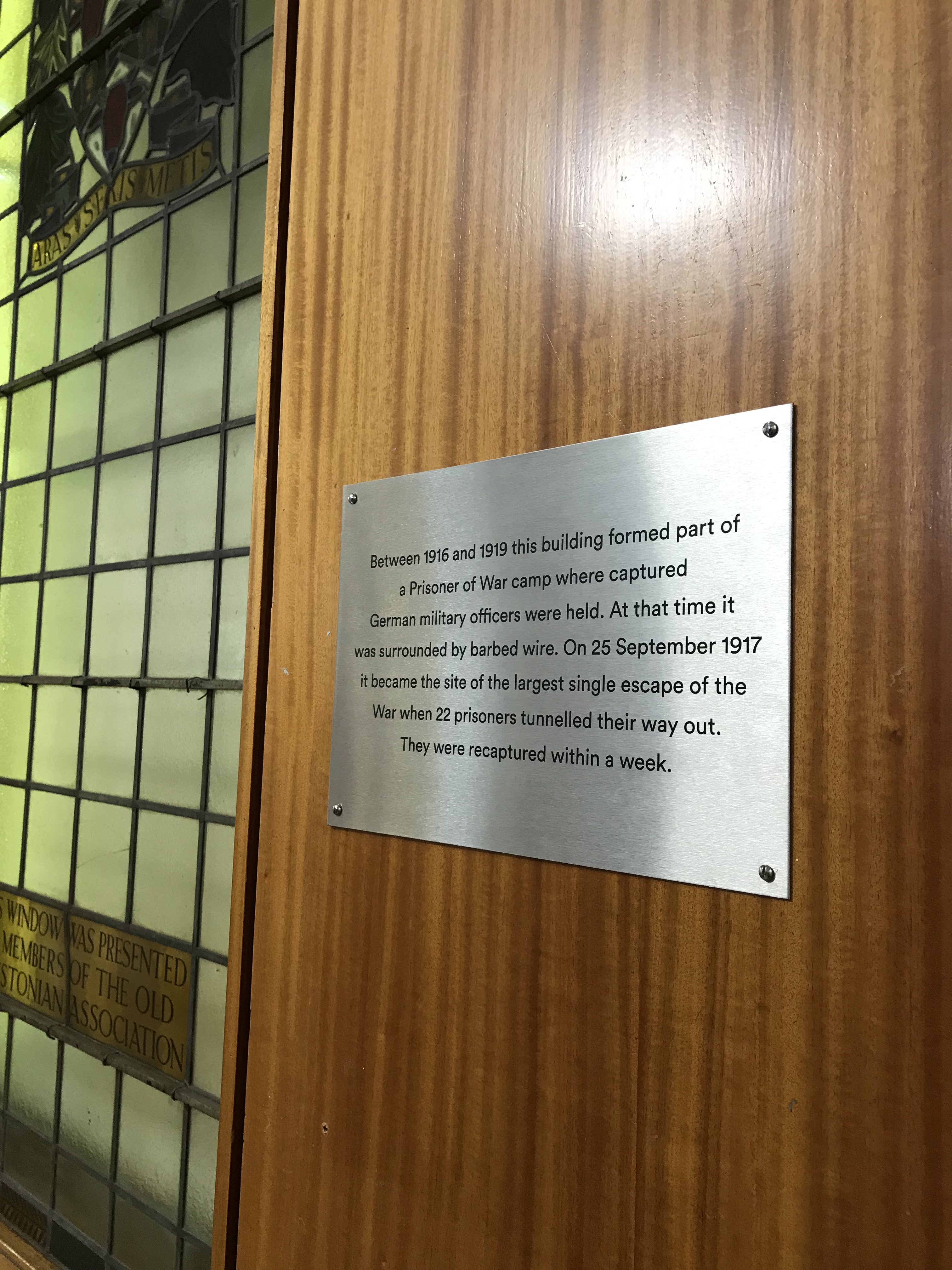
February 14, 2019, by Charlotte Anscombe
The University of Nottingham marks the closure of a Prisoner of War camp based at Sutton Bonington during WWI
To mark 100 years since the closure of a Prisoner of War camp at the University of Nottingham’s Sutton Bonington campus, a commemorative plaque has been installed to remember those who were detained and worked there.
Professor John Beckett from the Department of History at the University looks back on the period leading up to the closure…
Between 1916 and 1919 the buildings on the University of Nottingham’s Sutton Bonington campus were used as a Prisoner of War Camp for German officers. The escape of 22 officers on 25 September 1917 lent the camp a certain notoriety simply because of the scale of the break out.
All the men were recaptured and, following time in solitary confinement as punishment, were sent to other camps. Numbers at Sutton Bonington continued to grow, largely because during 1918 the gradual collapse of the German army led to many more Prisoners of War being taken into custody.
In October 1918 the camp was hit by a serious outbreak of influenza (Spanish flu). By one estimate 470 of the 650 Prisoners of War at Sutton Bonington fell ill, and 34 died. They were buried in the General Cemetery at Castle Donington, but their bodies were later moved to the German Military Cemetery at Cannock Chase.
On 11 November 1918 the signing of the Armistice brought about a cease fire. This in turn fed into the Treaty of Versailles in July 1919. During this period, Prisoners of War were not allowed home. However, a decision was taken to close Sutton Bonington, and this officially took place on 17 February 1919 when the staff, together with 549 German officers, 149 orderlies moved to Park Hall, Oswestry.
Anecdotally, those who were moved to Oswestry were marched through snow, and some made sleds to enable them to take their belongings to the railway station at Kegworth, from where they departed. They then had to stand for an hour in wind and rain until their transport arrived. On reaching Oswestry they had to trudge through thick mud to reach the camp. Many of them were subsequently repatriated in the months following the Treaty of Versailles. All German POWs returned to their homeland by the end of 1920.
The Sutton Bonington camp was closed earlier than most camps so that the buildings could be repurposed for their intended use. Huts and other fixtures had to be demolished and the barbed wire removed. The buildings then had to be cleaned and painted, but all was ready for the official opening of the new buildings of the Midland Dairy Institute (as they now were) on 27 October 1919.
In 1946 the Institute joined the University of Nottingham as the Faculty of Agriculture. Today it is the University of Nottingham’s Sutton Bonington Campus, housing the Schools of Biosciences and Veterinary Medicine and Science.
Although the War Office agreed to pay for its use of the buildings, in 1923 it still owed the College £5,000 for unpaid rent ‘in respect to the period of occupation’. It is not known whether or not this was ever paid.
Prisoner of War camps were created by taking over disused industrial buildings, schools, rural mansions, farm buildings, a racecourse, an amusement park, and even an old distillery near Bala in Wales. Some, like Sutton Bonington, were restored to their intended use, while Donington Park, which was administered together with Sutton Bonington, became a race track. Those which could not be converted to a civilian purpose were simply demolished.
No comments yet, fill out a comment to be the first

Leave a Reply